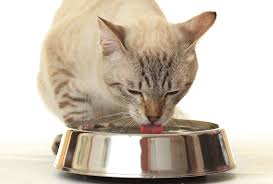How to Care for a Diabetic Cat: 15 Steps

Caring for a diabetic cat can be challenging, but with careful attention and dedication, you can help your feline friend enjoy a comfortable and healthy life. The following 15 steps will provide guidance on how to effectively care for your diabetic cat.
1.Consult with a veterinarian: Begin by getting a proper diagnosis and treatment plan from a knowledgeable veterinarian, who will perform tests and recommend suitable medications or insulin injections.
2.Monitor blood glucose levels: Regularly checking your cat’s blood glucose levels is crucial in managing their diabetes. Invest in a reliable glucometer and test strips, and follow your vet’s instructions on when and how often to test.
3.Maintain a consistent feeding schedule: Establishing consistency with meals helps regulate glucose levels. Feed your diabetic cat at the same times daily, spreading meals out evenly.
4.Measure portions carefully: Accurate portion sizes are vital in controlling your cat’s calorie intake. Too much or too little food could cause fluctuations in glucose levels.
5.Choose high-quality, low-carbohydrate food: A diet with fewer carbohydrates can keep blood sugar levels more stable. Your veterinarian can recommend appropriate food brands or recipes for homemade meals.
6.Manage weight effectively: Overweight cats are more prone to insulin resistance; hence maintaining an optimal weight is crucial. Work with your vet to create a weight loss plan if needed.
7.Administer insulin injections as prescribed: Follow your vet’s recommendations on insulin type, dosage, and frequency of injections to manage diabetes effectively.
8.Learn proper injection techniques: Before administering injections independently, have your vet teach you appropriate techniques and locations for injecting.
9.Rotate injection sites: Reduce pain and avoid tissue damage by rotating the sites where you give insulin injections.
10.Keep track of insulin supplies: Inspect the insulin bottle regularly for changes in appearance or expiry dates, and always have extra supplies on hand.
11.Monitor for hypoglycemia (low blood sugar): Know the signs of low blood sugar, such as disorientation, lethargy, and muscle twitching. Have a high-carb food or glucose gel available to treat hypoglycemia immediately.
12.Regular veterinary check-ups: Schedule routine check-ups for your diabetic cat to monitor their overall health, adjust treatment plans if necessary, and check for potential complications.
13.Provide plenty of water: Dehydration can adversely affect your cat’s glucose levels, so ensure that fresh water is always available.
14.Stay patient and open to adjustments: Diabetes management requires ongoing attention and may involve occasional adjustments in medications, diet, or insulin doses.
15.Offer love and support: Your furry friend needs your encouragement during this time. Provide a comfortable environment, shower them with love, and be diligent in maintaining their diabetes care routine.
By following these 15 essential steps, you can effectively manage your cat’s diabetes and promote a happy and healthy life for you both.






